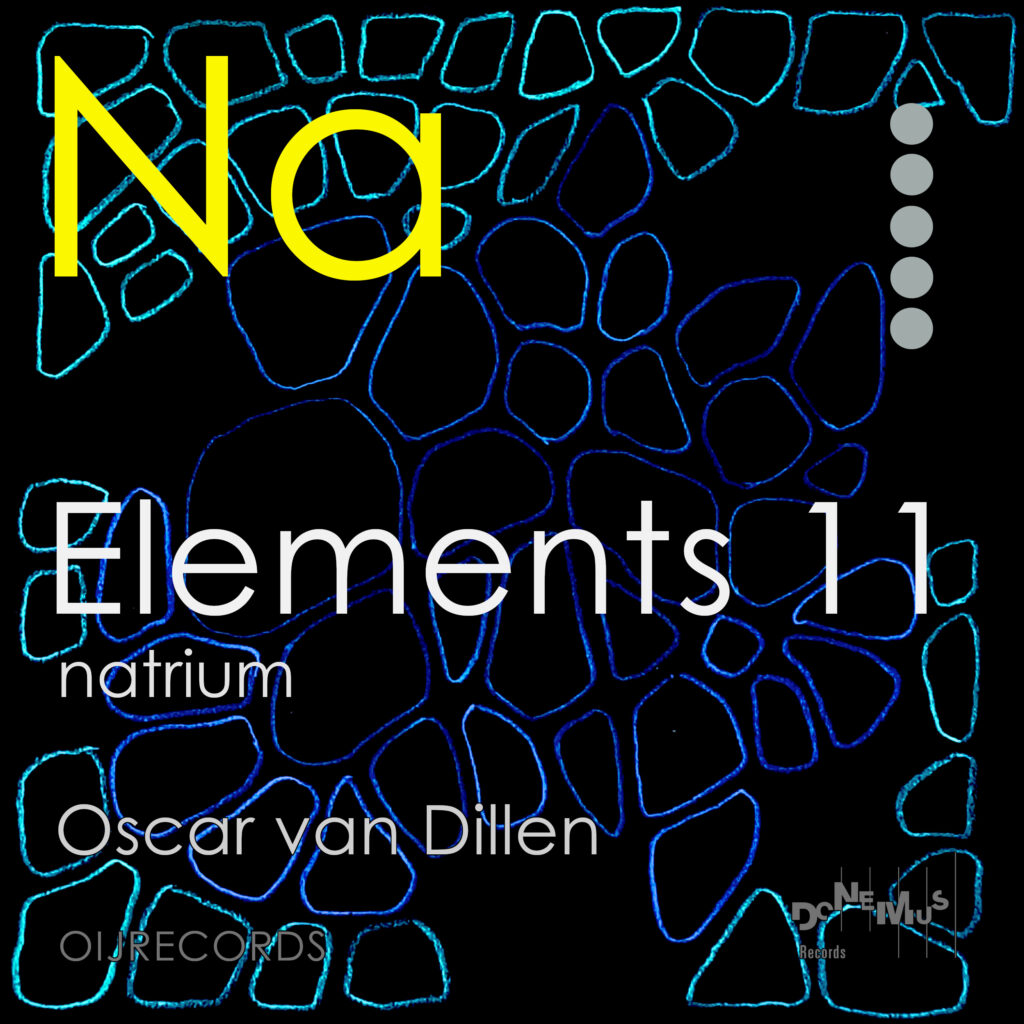Elements 11: Natrium

Elements 3: Natrium is the twenty-first album in this series of music on the Elements, a very large work in progress consisting of electronically/digitally created architectural music compositions by Oscar van Dillen.
The cover art in the Elements series consists of color inverted pencil drawings made by the composer.
A word of warning: after careful listening, the world around you may not sound the same any longer.
The work on this album was created, composed, recorded, and produced June-August 2023. All works, cover art and booklet of this album were created by Oscar van Dillen.
(…)
Element 11 is found in the 3rd period of Group 1 in the periodic system, the group containing all alkali metals (excepting Hydrogen, element 1, which although residing in the same group is very different, and can be seen as an element in a category of its own). Its symbol derived from the Latin Natrium, its common name in English is: Sodium, named after soda.
Sodium is a very abundant element on Earth, and generally best known in its form of table- or sea-salt NaCl (sodium chloride), which is a mineral come down from mountain erosion, and found dissolved in all sea water. Sodium is an essential element incorporated in all living organisms, so much so that even African elephants have been observed travelling hundreds of miles to caves on a regular basis, just in order to be able to grind some salt of the rocks in that place, to complement their salt-poor diet. In the Alps, many mammals are known to go to parking lots in the evenings to lick the stones on the sides, to get the salt left over from urinating hikers.
Daily salt intake is much to high in the richer parts of the world, were food companies build their businesses on selling edibles deliberately containing far too much salt (and sugar and fat), because the human body craves these as a result of our species’ history in which there was often a lack of these. But sodium is essential for our bodies too. As an example: neurons, nerve cells, contain a subtle mechanism in their membranes involving both sodium and potassium (the next heavier alkali metal, element 19), using the single electron in their outer shells to create alternating negative and positive electric charges, for nerve impulses to travel, which are electrical pulses. Sodium makes us tick, move, feel, see, hear, and think, and may one day make us aware we are a minor part of a global ecosystem, and not some “crown of creation”.
(…)
read more on www.oij-records.com
